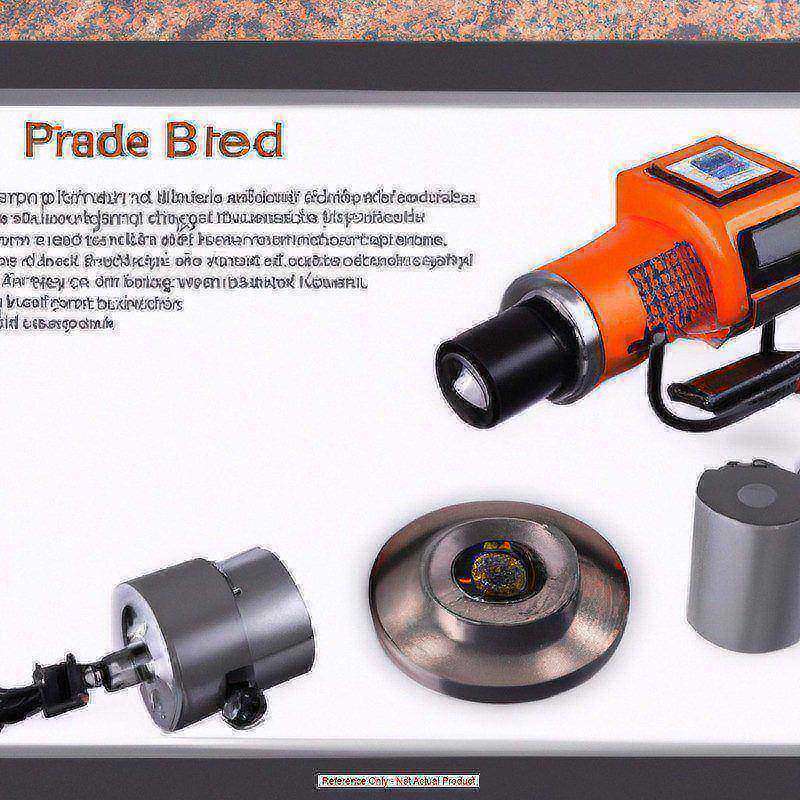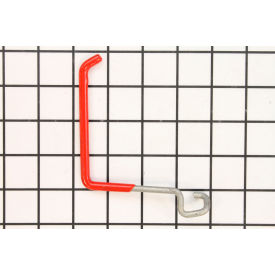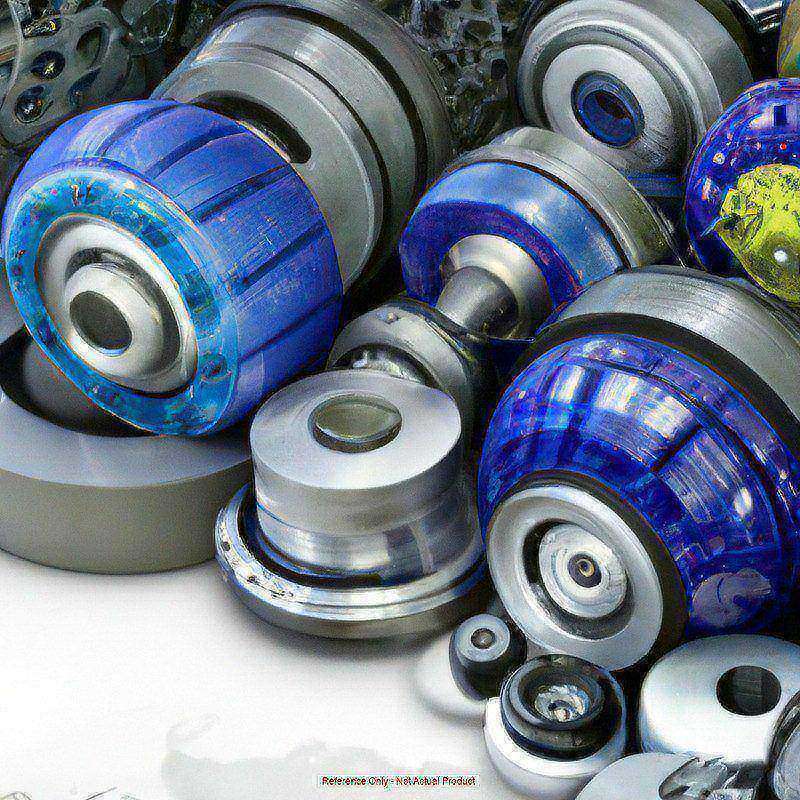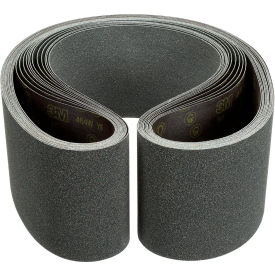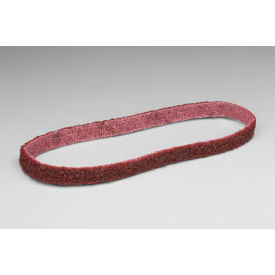Precision Sanding: Tips, Techniques, and Quality Products

Overview
Sanding is an essential step in many woodworking and finishing projects. Whether you're a professional craftsman or a DIY enthusiast, achieving a smooth and flawless finish requires the right tools and techniques. In this guide, we'll dive into the world of precision sanding with discs and sanders. We'll explore various product categories, their applications, specifications, and characteristics to help you make informed purchase decisions.
Sanding Belts and Kits
Sanding belts and kits are versatile tools designed to tackle a wide range of sanding tasks. These abrasive belts are commonly used with belt sanders and provide efficient material removal. Here are some key details you should consider when choosing sanding belts and kits:
- Grit Size: Grit size determines the coarseness or fineness of the abrasive. Lower grit numbers (e.g., 40 or 60) are suitable for heavy material removal, while higher grit numbers (e.g., 120 or 220) are ideal for finishing and smoothing surfaces.
- Belt Dimensions: Pay attention to the width and length of the sanding belt, as it should match your sander's specifications. Common sizes include 3x21 inches and 4x24 inches.
- Material Compatibility: Ensure that the sanding belt is suitable for the type of material you'll be working with. Some belts are designed for wood, while others are better suited for metal or plastic.
- Durability: Look for sanding belts made from high-quality abrasives that resist wear and last longer. Coated abrasives like aluminum oxide and silicon carbide are commonly used for durability.
- Backing Material: The backing material of the belt should provide stability and prevent tearing. Common backing materials include cloth, paper, and polyester.
- Splicing: Consider whether the belt has a seamless splice for smooth operation without bumps or irregularities.
Recommended Products: Here are some recommended sanding belts and kits available at GoVets:
Sanding Discs and Kits
Sanding discs are essential tools in precision sanding projects. They come in various types and grits to cater to different applications. Whether you're smoothing out rough surfaces or preparing wood for finishing, sanding discs are your go-to choice.
Types of Sanding Discs:
- Hook and Loop Sanding Discs: These discs are easy to attach and remove from your sander, making them ideal for quick changes during a project. You can find a range of grits to suit your needs.
- PSA (Pressure Sensitive Adhesive) Sanding Discs: These discs have an adhesive backing that sticks to the sander's pad. They are durable and can be used for extended periods.
- Fiber Discs: Fiber discs are highly durable and designed for heavy-duty sanding tasks. They work well on metal and are known for their longevity.
- Film Backed Sanding Discs: These discs have a thin film backing, providing flexibility and precision. They are commonly used in woodworking and automotive applications.
- Abrasive Sanding Discs: These are standard sanding discs that come in various grits. They are versatile and suitable for a wide range of projects.
Applications and Specifications:
- Sanding discs are used in conjunction with a variety of sanders, including random orbital sanders and disc sanders.
- They are available in different diameters, typically ranging from 5 inches to 12 inches, allowing you to choose the right size for your sander.
- Grit is an important specification to consider. Lower grits (e.g., 40-80) are suitable for heavy material removal, while higher grits (e.g., 120-320) are used for finer finishing.
- Some sanding discs are designed for specific materials like wood, metal, or plastic. Make sure to choose the appropriate type for your project.
- You can find multi-packs of sanding discs, which can be cost-effective for large projects.
For a wide selection of sanding discs and kits, visit Sanding Discs and Kits.
Recommended Products:
Floor Sanding Discs
Floor sanding is a specialized task that requires precision and the right equipment. Floor sanding discs are designed for this purpose, allowing you to achieve a smooth and polished floor surface.
Types of Floor Sanding Discs:
- Edger Discs: These smaller discs are designed for reaching tight spaces and edges that larger sanders can't access easily.
- Drum Sanding Discs: Drum sanders are used for heavy-duty floor sanding. Drum sanding discs are large and provide efficient material removal.
Applications and Specifications:
- Floor sanding discs are typically used with floor sanding machines, such as edgers and drum sanders.
- Grit selection is crucial. Coarse grits (e.g., 24-60) are used for initial rough sanding, while finer grits (e.g., 80-120) are used for the final finishing.
- When working on hardwood floors, it's essential to use the right type of floor sanding disc to avoid damage.
- Floor sanding discs are available in various sizes, with common diameters being 7 inches and 8 inches.
For a wide range of floor sanding discs, visit Floor Sanding Discs.
Recommended Products:
Sanding Disc Backup Pads, Face Plates, and Hubs
To achieve precision sanding, you need the right backing pads, face plates, and hubs for your sanding discs. These components play a crucial role in ensuring a secure and effective sanding process.
Types of Backup Pads, Face Plates, and Hubs:
- Hook and Loop Backup Pads: These pads have a hook and loop attachment system, allowing for easy and quick changes of sanding discs.
- PSA Backup Pads: Pressure Sensitive Adhesive (PSA) backing pads are designed for sanding discs with adhesive backing.
- Face Plates and Hubs: These are used with disc sanders and play a role in stabilizing the sanding disc.
Applications and Specifications:
- Backup pads and hubs come in various sizes to match the diameter of your sanding disc.
- The type of attachment (hook and loop or PSA) should match the sanding discs you intend to use.
- Some backing pads have vacuum holes for dust collection, enhancing the cleanliness of your workspace.
- Ensure compatibility with your specific sander model when choosing these accessories.
For a variety of sanding disc backup pads, face plates, and hubs, visit Sanding Disc Backup Pads, Face Plates, and Hubs.
Recommended Products:
Sanding Sponges and Hand Sanding Blocks
Sometimes, precision sanding requires a more hands-on approach. Sanding sponges and hand sanding blocks are excellent tools for achieving controlled and detailed sanding.
Types of Sanding Sponges and Hand Sanding Blocks:
- Sanding Sponges: These are flexible, abrasive foam blocks that conform to the shape of the workpiece, making them ideal for curved or irregular surfaces.
- Hand Sanding Blocks: Hand sanding blocks are typically rigid and offer stability for flat surface sanding.
Applications and Specifications:
- Sanding sponges are available in various grits and can be used wet or dry, depending on the material and application.
- Hand sanding blocks come in different shapes and sizes to suit your needs, from rectangular blocks to contour sanding blocks.
- Both sanding sponges and hand sanding blocks are reusable, making them cost-effective choices.
- They are excellent for touch-ups, spot sanding, and achieving a smooth finish before painting or staining.
For a selection of sanding sponges and hand sanding blocks, visit Sanding Sponges and Hand Sanding Blocks.
Recommended Products:
Sanding Sheets
Sanding sheets are versatile abrasives that come in various forms, such as rolls, pads, and individual sheets. They are indispensable for hand sanding or fitting onto sanding blocks and can be used for a wide range of applications.
Types of Sanding Sheets:
- Emery Cloth: Emery cloth is a flexible abrasive sheet with a cloth backing. It's suitable for both metal and woodworking.
- Sandpaper Sheets: These are the most common type of sanding sheets, available in a variety of grits for different tasks.
- Pre-Cut Sanding Sheets: These sheets are pre-cut to fit specific sanding blocks, making them convenient for precise sanding.
Applications and Specifications:
- Sanding sheets are available in various grits, ranging from coarse for material removal to fine for finishing.
- Emery cloth is often used for metalworking and is available in rolls, making it easy to cut to the desired length.
- Sandpaper sheets are used for a wide range of tasks, from smoothing wood surfaces to preparing them for finishing.
- Pre-cut sanding sheets save time and effort when you need to replace worn-out sheets on your sanding block.
For a variety of sanding sheets, visit Sanding Sheets.
Recommended Products:
Sanding Drums and Sleeves
Sanding drums and sleeves are essential for precision sanding in curved or contoured areas. They are commonly used with rotary tools like drills or drill presses.
Types of Sanding Drums and Sleeves:
- Rubber Expanding Drum: This type of drum is adjustable and can hold sanding sleeves securely.
- Sanding Sleeves: These are cylindrical sanding belts designed to fit onto sanding drums. They come in various grits for different applications.
Applications and Specifications:
-
Sanding drums are often used for detailed work on woodworking projects, especially when it comes to smoothing curved or irregular shapes.
-
Sanding sleeves are available in different diameters and grits, making it easy to find the right size and abrasive level for your project.
-
They are compatible with various rotary tools, so ensure that the drum and sleeve you choose match your tool.
For a selection of sanding drums and sleeves, visit GoVets
Recommended Products:
Sanding Belts
Sanding belts are commonly used with belt sanders and are ideal for large-scale sanding projects. They come in a range of grits and sizes to suit various tasks.
Types of Sanding Belts:
- Aluminum Oxide Sanding Belts: These belts are durable and versatile, suitable for woodworking, metalworking, and more.
- Zirconia Alumina Sanding Belts: Zirconia alumina belts are known for their exceptional durability and are often used for heavy-duty sanding tasks.
- Ceramic Sanding Belts: Ceramic belts are designed for extreme durability and long life, making them ideal for demanding applications.
Applications and Specifications:
- When selecting sanding belts, consider the belt's width and length, which should match your belt sander.
- Grit selection is crucial, with coarse grits for material removal and finer grits for finishing.
- Sanding belts are commonly used in woodworking, metalworking, and even knife making.
- They are available in various dimensions, including common sizes like 3x18 inches and 4x36 inches.
For a range of sanding belts, visit Sanding Belts.
Recommended Products:
Sanding Accessories
In addition to sanding discs, sheets, drums, and belts, there are various accessories that can enhance your precision sanding experience. These accessories include dust extraction systems, sanding guides, and more.
Types of Sanding Accessories:
- Dust Extraction Systems: These attachments help keep your workspace clean by collecting dust generated during sanding.
- Sanding Guides: Sanding guides or fences are useful for achieving straight and consistent sanding lines.
- Sanding Blocks and Pads: These provide additional support and control when hand sanding.
- Sanding Frames: Frames can be used with sanding belts to provide stability and prevent over-sanding.
Applications and Specifications:
- Dust extraction systems are particularly important for health and safety, as they minimize airborne dust particles.
- Sanding guides and frames are beneficial for achieving precise and even sanding results.
- Sanding blocks and pads come in various shapes and materials to accommodate different hand sanding needs.
For a variety of sanding accessories, visit Sanding Accessories.
Recommended Products:
Advanced Precision Sanding Techniques
- Edge Sanding: When working on woodworking projects, achieving smooth edges is crucial. Use a sanding block or a dedicated edge sander to create clean, square, and smooth edges. Start with a coarse grit and progressively move to finer grits for a polished finish.
- Contour Sanding: For intricate and contoured surfaces, consider using flexible sanding tools like sponge sanders or contour sanding grips. These conform to the shape of your workpiece, ensuring uniform sanding even in tight curves.
- End-Grain Sanding: When sanding end grain, such as on wooden tabletops or cutting boards, use a fine-grit sandpaper or sanding disc. Sanding end grain requires extra care to prevent splintering, so make sure to sand with the grain direction.
- Wet Sanding: Wet sanding is often used in automotive finishing or fine woodworking. It involves using water as a lubricant to reduce heat and achieve an exceptionally smooth surface. You'll need waterproof sandpaper for this technique.
- Inlays and Veneers: When working with delicate inlays or veneers, opt for very fine sandpaper or abrasive pads. Be gentle to avoid damaging the delicate inlay patterns or veneer layers.
Tips for Precision Sanding
- Work in Progressively Finer Grits: Start with a coarse grit to remove material efficiently, and then gradually move to finer grits for a smoother finish. This stepwise approach ensures a polished result.
- Use a Sanding Block: When hand sanding, always use a sanding block or pad. It provides stability and even pressure, reducing the risk of uneven sanding.
- Keep it Dust-Free: Dust can affect the quality of your finish and pose health hazards. Use dust extraction systems or work in a well-ventilated area with appropriate personal protective equipment.
- Check for Imperfections: After sanding with one grit, inspect your workpiece for imperfections like scratches or uneven spots. Address these issues before moving on to finer grits.
- Practice Patience: Precision sanding requires patience and attention to detail. Take your time and focus on achieving the desired level of smoothness.
- Maintain Your Tools: Keep your sanding discs, sheets, belts, and drums clean and in good condition. Replace worn-out abrasives for consistent results.
- Test on Scrap: Before sanding your actual workpiece, practice on scrap material to get a feel for the technique and to determine the ideal grit sequence.
Remember that precision sanding is an art, and mastering it can greatly enhance the quality of your woodworking, metalworking, or DIY projects.
If you have specific questions about advanced techniques or need product recommendations for your unique project, please feel free to ask. We're here to assist you in achieving exceptional results with your precision sanding endeavors!
Stay tuned for more tips, guides, and product recommendations from GoVets.com, your trusted source for all your sanding and abrasive needs.























